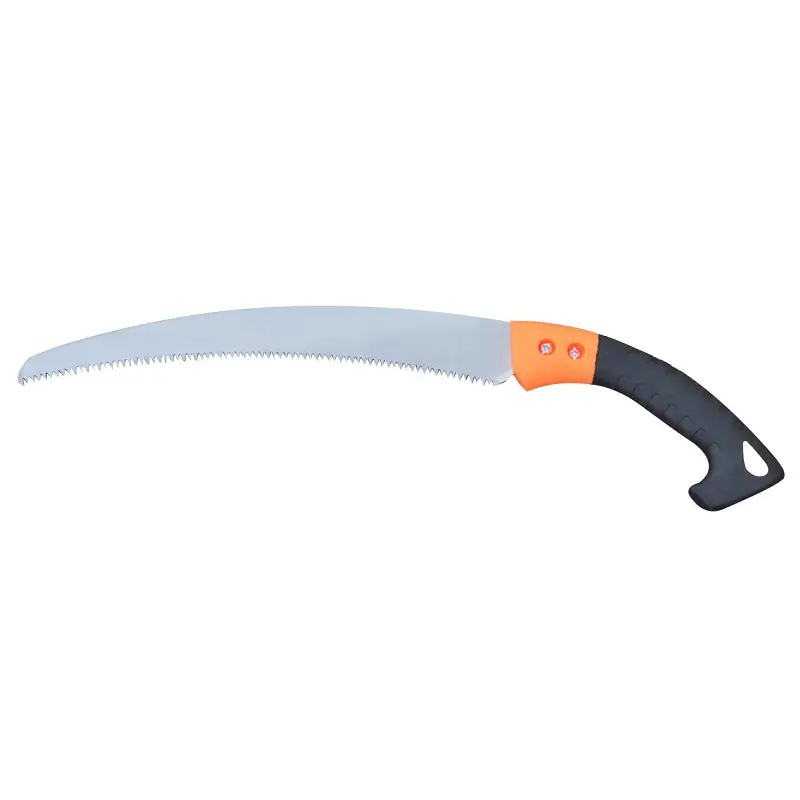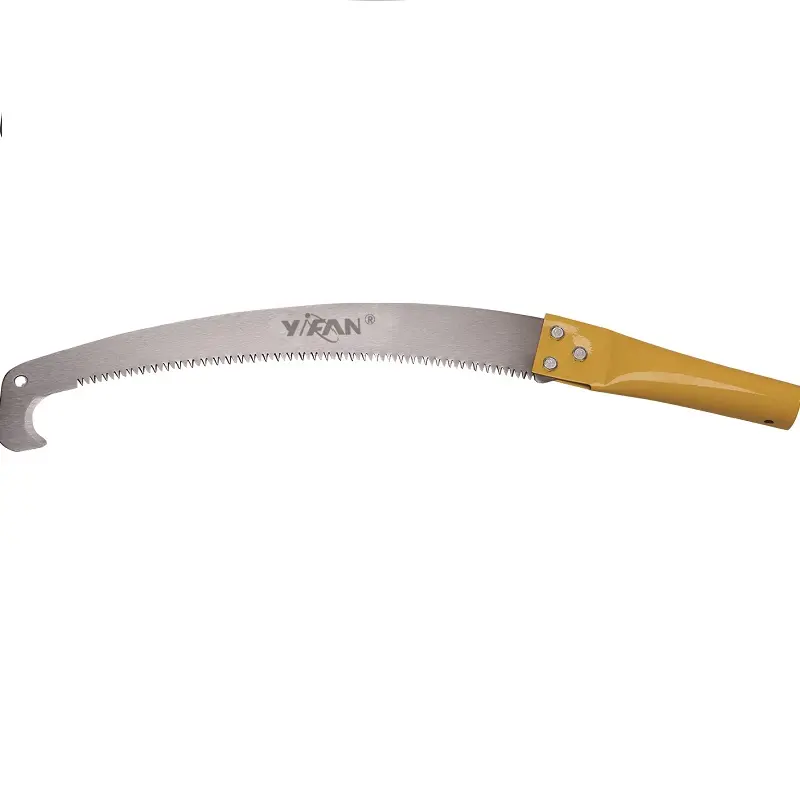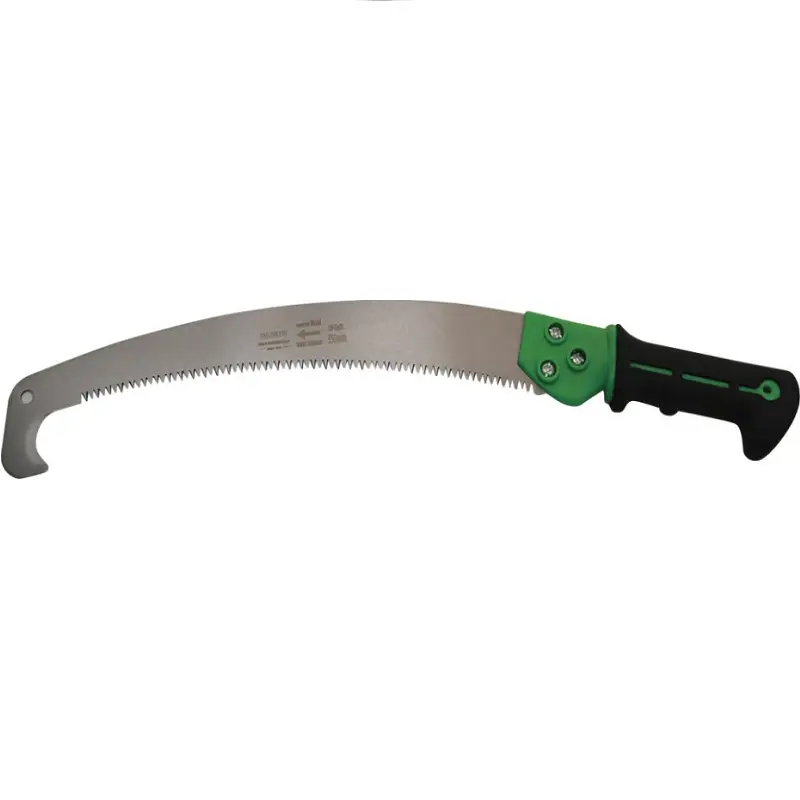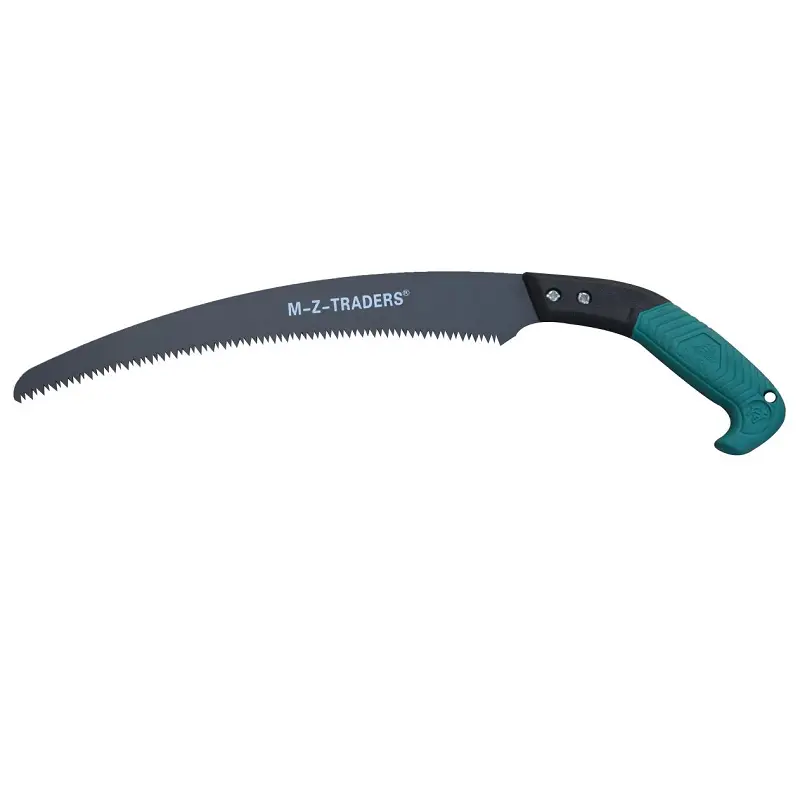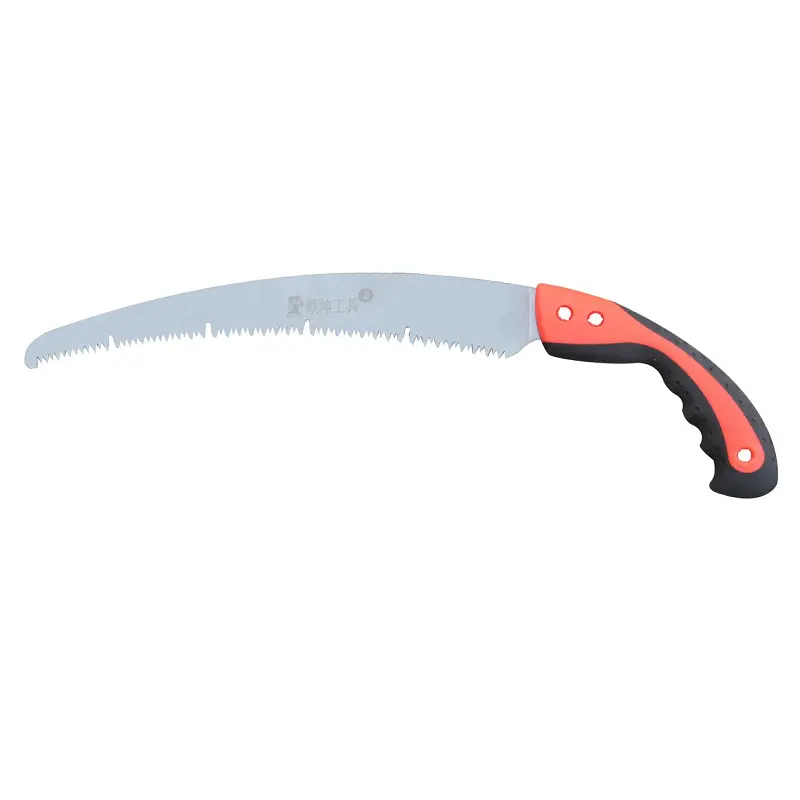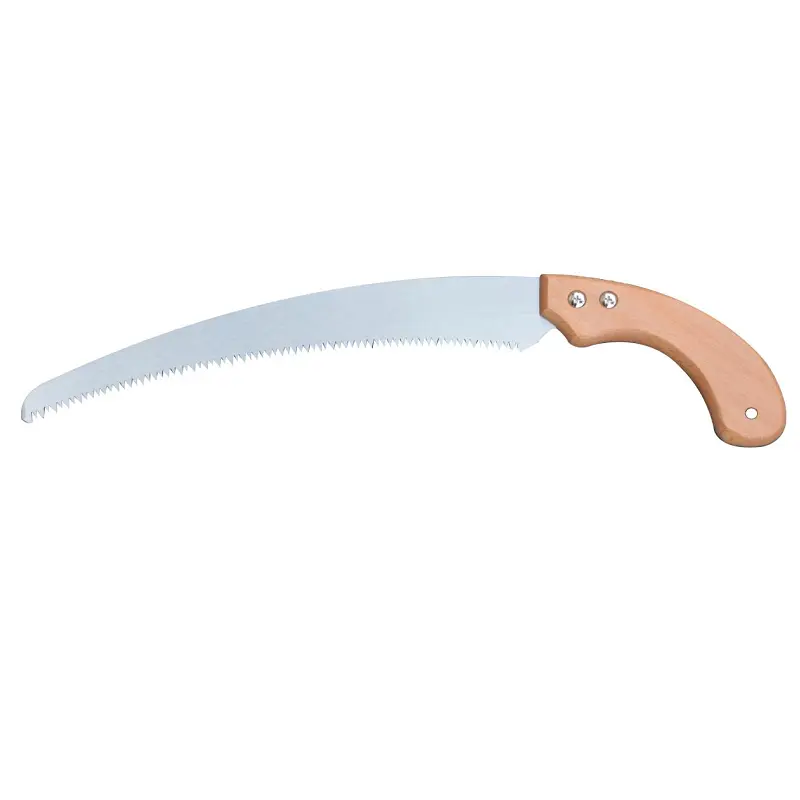Fruit tree saw
一、Production description:
A manual fruit tree saw is a manual tool specially used for fruit tree operations. Its main function is to cut branches and trunks of fruit trees through saw teeth.
二、use:
1.Before using a manual fruit tree saw, check whether the saw blade is damaged. Select a manual fruit tree according to the thickness of the branches to be sawed and the working environment. In order to ensure safety, you need to wear protective equipment.
2.For thinner branches, it can generally be operated with one hand. When sawing thicker branches, both hands are required.
3.In the early stage of sawing, keep the saw blade vertical to ensure that the saw cut is flat.
4.As the sawing goes deeper, gradually increase the push and pull amplitude. During the sawing process, keep the saw stable to prevent the saw blade from shaking left and right.
5.After sawing the branches, clean the saw blade in time and then maintain the saw.
三、Performance has advantages:
1.The saw blades of manual fruit tree saws are mostly made of high-quality steel, such as high-carbon steel, alloy steel or manganese steel, which are durable;
2.The shape and arrangement of the saw teeth are carefully designed to make the sawing process smoother.
3.Manual fruit tree saws are generally small in size and light in weight, easy to carry and operate,
4.Since manual fruit tree saws do not require power or other power sources, they can be used anytime and anywhere, and there is no risk of electric shock, mechanical failure, etc.
5.The price of manual fruit tree saws is relatively low, and it does not require additional energy consumption and complicated maintenance. It is an economical tool.
四、Process characteristics
1.Usually fine teeth or medium teeth are used to adapt to the hardness and texture of fruit wood.
2.Generally, high-strength and high-hardness alloy steel is selected to ensure the wear resistance and sharpness of the saw blade.
3.The hardness and toughness of the saw blade are improved through heat treatment processes such as quenching and tempering.
4.Surface treatments such as chrome plating and blackening are performed to prevent the saw blade from rusting and corrosion.



